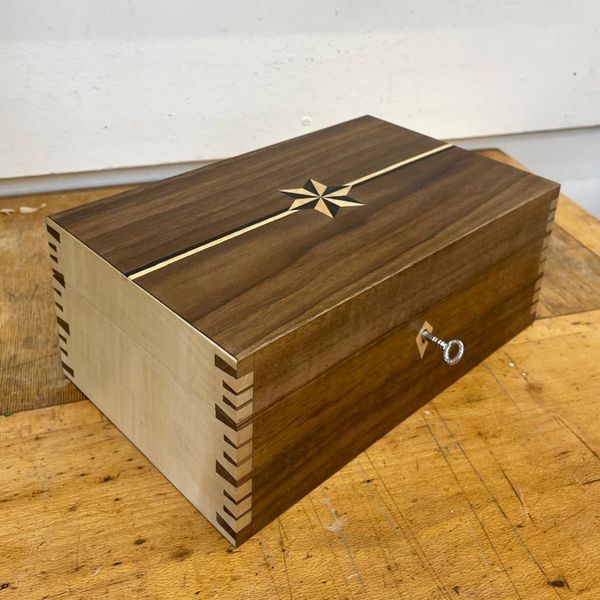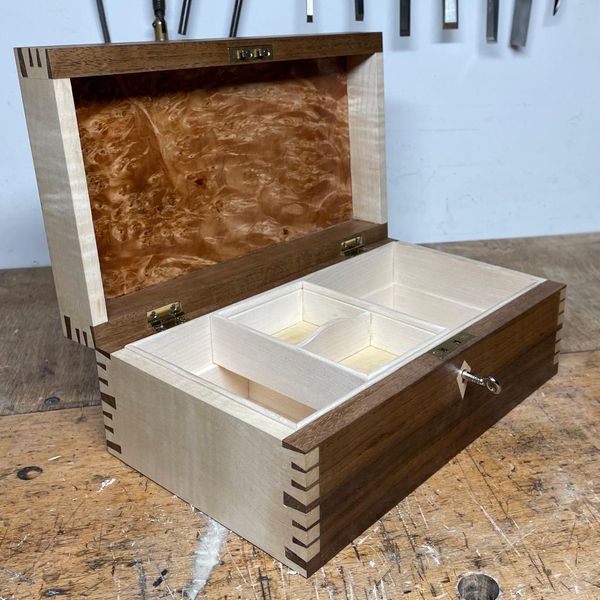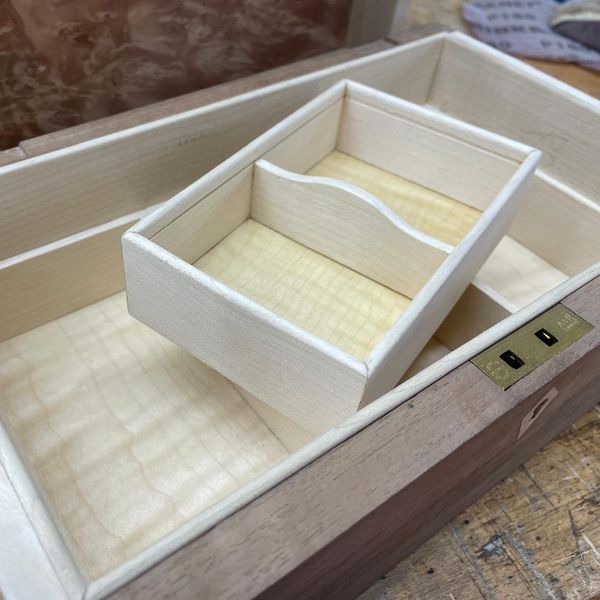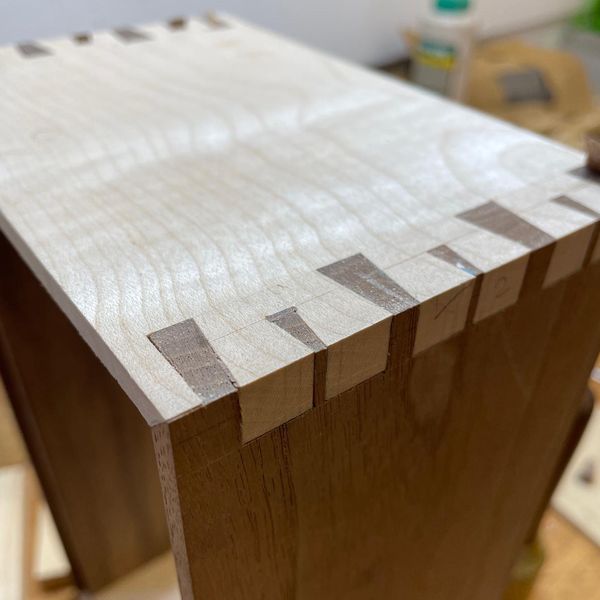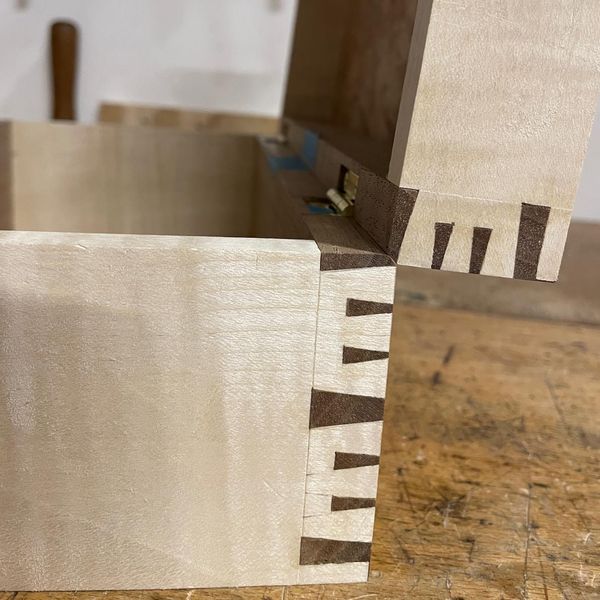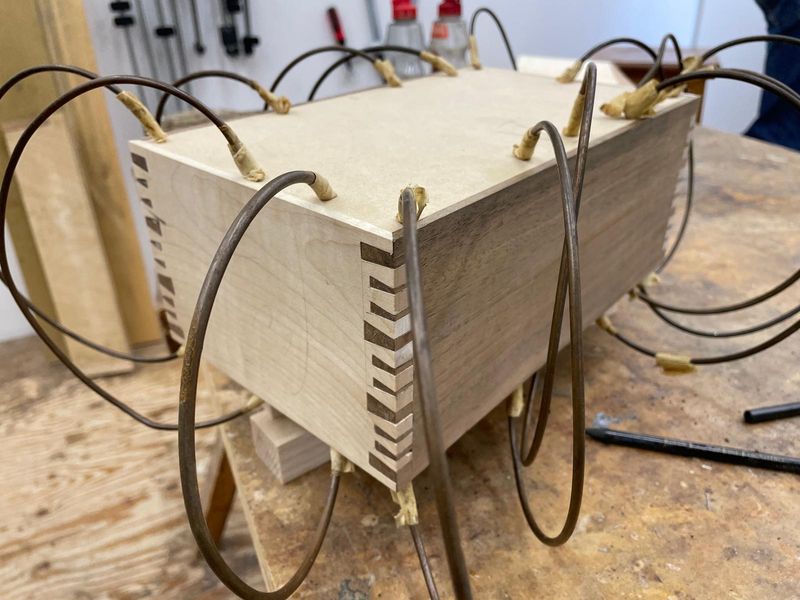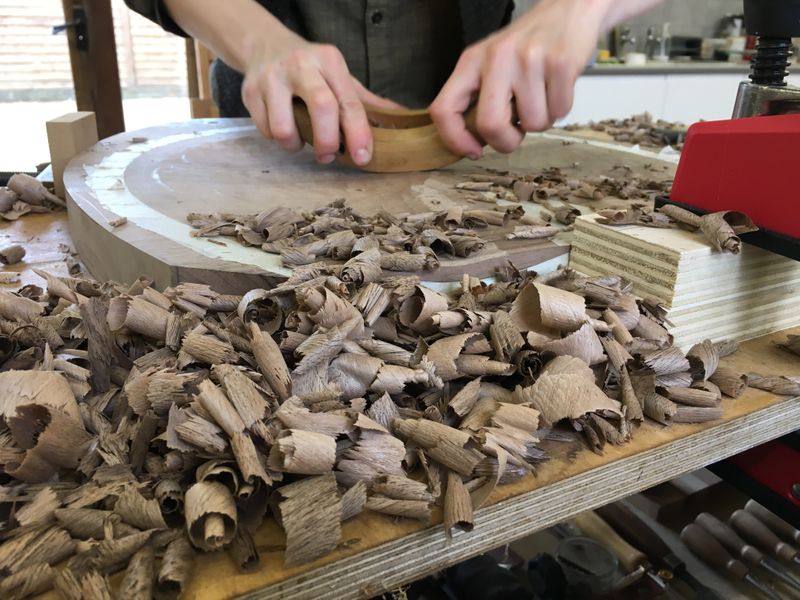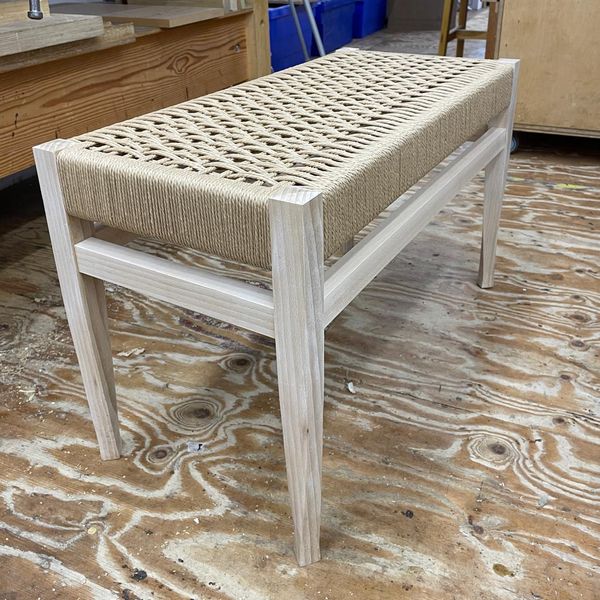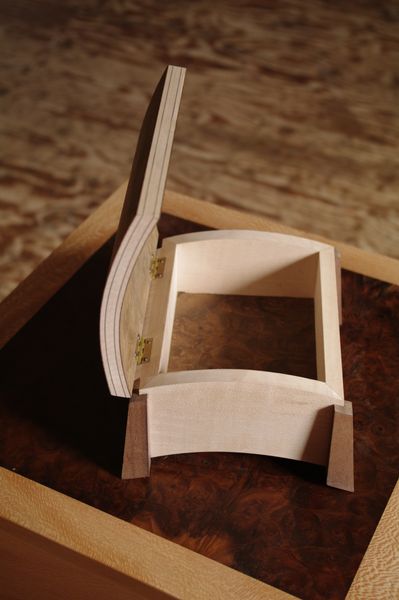PROJECT - Make A Decorative Box with Lift Out Tray
Description
Everyone loves a box - especially if it has some fancy dovetails on its corners, pretty veneer on its lid, compartments inside to keep treasures tidy and organised, and a lock to keep little fingers at bay and treasures safe and secure. We all know that dovetails are an elegant, strong solution for jointing the corners of boxes. If you’ve already successfully cut a few sets of dovetails, perhaps on the ‘Skills Week’, this course will give you the perfect opportunity to take things to the next level with some ‘Houndstooth Dovetails’, great for building your hand-skills, and a little more demanding to cut and more visually interesting. A practice set to get your eye in and remind you of the process, then the critical, precise layout, and cutting of four sets to create the box. Rebates will be needed to house the top and the base of the box, and the lid accurately split from the bottom half of the box through the middle of a dovetail ‘pin’, which presents the perfect opportunity to become acquainted with the Router Table. Although the ‘Top’ can be pre-veneered on its inside face, the outside must be veneered after the top has been glued into the rebate, this gives you the chance to make a fancy veneer ‘Lay-On’, perhaps ‘Quartered’, with a central ‘Star’ or a geometric ‘Parquetry’ pattern. We’ll look at these options and the techniques that are used to successfully work with these very skinny sheets of wood. Gluing the decorative veneer will give you the chance to become acquainted with a Vacuum Press. Letting metalwork into wood is another important skill for a cabinetmaker, usually coming near the end of a project. If you’re going to avoid ruining your day, it’s vital that you have a completely foolproof method for fitting hinges and locks. We’ll look at ‘Hinge Theory’, so that you understand the critical effect of positioning the ‘Pivot Point’ of a Butt Hinge, how to make fine adjustments, and how to make a standard hinge work as a ‘Stop Hinge’. Cutting in a Lock requires just the same precise fitting if it is to look good, and work smoothly. Fitting a decorative diamond-shaped ‘Escutcheon’ protects the keyhole and gives an elegant finishing touch. Lining the inside of the box, adding compartments and making a lift-out tray with skinny pieces of wood is another test of marking out, and the cutting of crisp, precise mitres. This will give you the chance to become acquainted with a wonderfully named planing jig- the ‘Donkey’s Ear’! As usual, a full set of razor-sharp tools will be provided, knowing how to sharpen them would be useful, but by no means critical for this course. What you will learn: PREPARING TIMBER COMPONENTS TO FINE TOLERANCES: A little bit of a recap on planing technique to prepare the main components to final dimension. HOUND’S TOOTH DOVETAILS: Still probably the most effective technique for joining bits of wood together on a corner, we’ll look at Dovetailing techniques, taking through dovetails up to the next level with pins of different lengths. ‘Hound’s Tooth Dovetails’ are the perfect way to develop those vital sawing and chiseling skills. THE ROUTER TABLE: Setting up and using this incredibly versatile and useful machine to cut accurate rebates for the base and top, and to split the top from the base with absolute control and precision. MAKING a VENEER ‘LAY-ON’ & THE VACUUM PRESS: Preparing a decorative pattern to make a veneer ‘Lay-On’ for the top of the lid. Selecting an appropriate glue, and using the vacuum press to attach the veneers to the lid. HINGES and LOCKS: There’s absolutely no room for mistakes when letting metal fittings into wood. Understanding the importance of hinge positioning is vital when hinging anything, but particularly important when turning a standard butt hinge into a stop-hinge. Fitting a ‘cut lock’ shouldn’t be too challenging if you understand the cutting-in sequence, and have a couple of modified tools at your disposal. FITTING a DECORATIVE ESCUTCHEON: An elegant diamond-shaped reinforcement for a keyhole- cutting the escutcheon in a contrasting wood into the font of the box using a combination of hand-held router or perhaps the Shaper Origin, finishing off with a little precise chiseling. BOX LINER, COMPARTMENTS and TRAY: Precise dimensioning of these skinny components to give a crisply fitted out interior to the box. The Donkey’s Ear planing jig is indispensable for cutting the accurate mitre joints for the corners, the compartments and the tray, which will also have veneer key corners.
What's included in the price?
All materials, safety equipment if required. Tea breaks with coffee, tea, cakes and biscuits. Students should bring their own packed lunch.
Duration
4 days
Cancellation policy
Non-refundable - Refunds are not available
Maker

Over the 35 years I have been running a successful bespoke furniture making and antique restoration business, I have become passionate about passing on the skills and knowledge through my Woodworking School. We have designed a range of educational long and short courses that have traditional hand skills at their core, the key requirement being simply enthusiasm and a thirst for knowledge.
FAQs
Teaching is from 9am until 6pm each day except the final day when the course ends at 5pm to allow for those with long journeys home.
Venue






